The baby boy (1 month old, living in Gia Lai ) was taken to Children's Hospital 2 by his family for examination in a state of high urinary tract infection, urine cloudy like rice water with green pus.
Medical history showed that during pregnancy, the mother had a local prenatal check-up and found abnormalities in the urinary system above the kidney area, with suspected hydronephrosis but no abnormalities in the ureter below the bladder. The baby was born normally at full term, however, the family noted that after birth, the baby had difficulty urinating, urinating normally but then intermittently, and the urine was sometimes cloudy. During this check-up, the urine was cloudy like rice-washing water with small green pus threads coming out, the baby had a high fever and refused to breastfeed. The baby was admitted to Children's Hospital 2 (HCMC) because of a high urinary tract infection.
On January 16, Dr. Pham Ngoc Thach, Deputy Director of Children's Hospital 2, said that after being admitted, the baby was resuscitated and treated actively by doctors. In addition, the baby was examined and screened for congenital urinary system abnormalities, double kidney and ureter causing hydronephrosis, especially the baby had a giant ureteral prolapse that occupied almost the entire bladder. This was the cause of kidney and ureter obstruction, hydronephrosis, urinary tract infection as well as difficulty in the baby's urination.
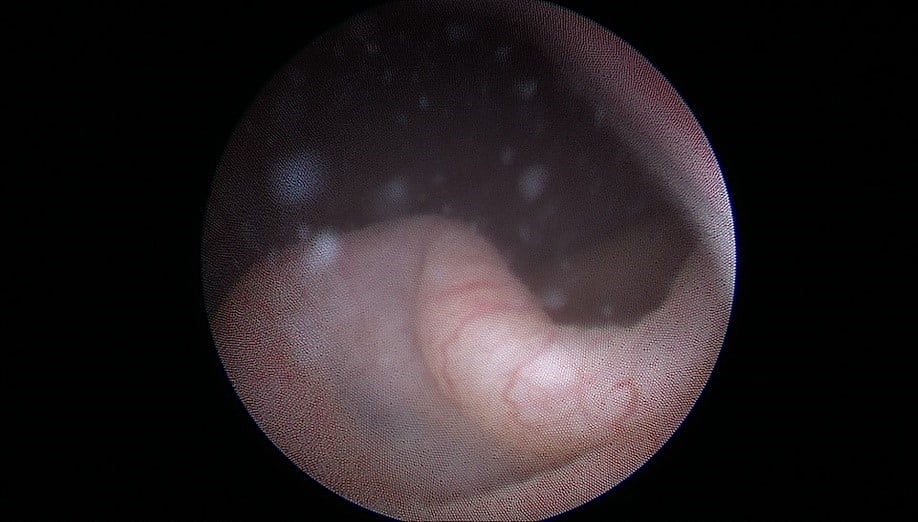
Giant ureterocele forms folds in the bladder causing obstruction
First time suprapubic endoscopy
Once the urinary tract infection is relatively stable, the patient will be treated by the urology team with cystourethroscopy to treat the ureteral obstruction caused by the prolapsed sac. However, with the traditional approach only through the urethra, doctors will encounter many difficulties in treating the obstruction. Especially with a giant prolapsed sac that is always mobile, in addition, there may not be much space left to manipulate in the bladder, potentially causing mistakes such as damaging the ureteral and bladder walls.
"To solve this problem, the hospital has implemented a new technique, which is after endoscopy into the bladder through the urethra, determining the location of the ureteral cyst in the bladder, a small needle is inserted through the skin above the pubic bone into the bladder. Through the needle, a very small clamp is inserted into the bladder to fix the anterior wall of the ureteral cyst, this helps to accurately determine the lesion and firmly hold the ureteral cyst, making it much easier to cut the cyst," Dr. Thach shared.
This new method has many advantages over the traditional method. Because the anterior wall of the cyst is always kept taut, fixed, and separate from the posterior wall of the cyst, it helps to cut precisely into the desired positions on the cyst wall, avoiding cutting into blood vessels and avoiding damage to the posterior wall of the cyst. Meanwhile, in the traditional method, the doctor only uses a small knife from the urethrascope to cut directly into the cyst without the support of a cyst clamp.
After the procedure, the patient was placed in a urinary catheter for monitoring, the infection improved significantly, and kidney function was normal. The baby was discharged 5 days after surgery, breastfeeding well, with no surgical scars.
Ureteral cysts if not treated promptly will cause kidney complications.
Dr. Thach said that each year, Children's Hospital 2 receives about 12-15 cases of ureteral cysts. Ureteral cysts are often accompanied by a congenital abnormality of double kidney and ureter. The disease manifests as a large dilation of the cyst wall of the ureter inserted into the bladder. If ureteral cysts are not detected and treated in the long term, they will cause complications in the kidneys and urinary system such as recurrent urinary tract infections, ureteral stones, and renal fibrosis leading to impaired kidney function.
The method of using a small needle above the pubic bone for treatment is currently only implemented at Children's Hospital 2, a breakthrough improvement in severe cases of large cysts. The treatment method is very effective, gentle and minimally invasive.
Source: https://thanhnien.vn/lan-dau-noi-soi-tren-xuong-mu-cuu-be-trai-tieu-nuoc-duc-nhu-nuoc-vo-gao-185250116153532502.htm






![[Photo] Prime Minister Pham Minh Chinh and Prime Minister of the Kingdom of Thailand Paetongtarn Shinawatra attend the Vietnam-Thailand Business Forum 2025](https://vphoto.vietnam.vn/thumb/1200x675/vietnam/resource/IMAGE/2025/5/16/1cdfce54d25c48a68ae6fb9204f2171a)

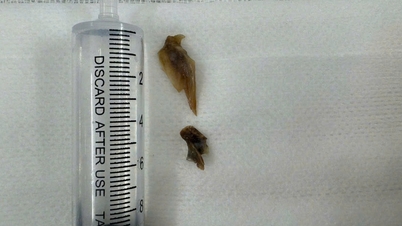

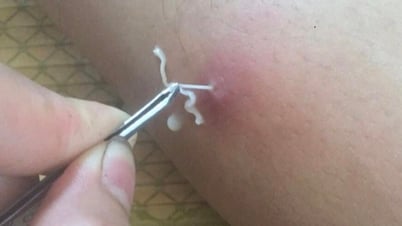
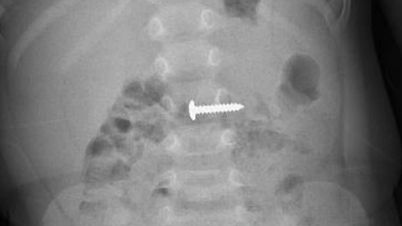



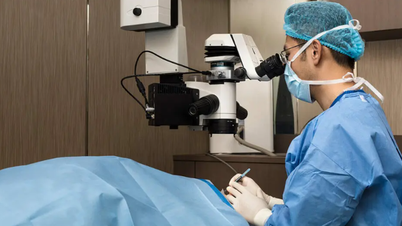
















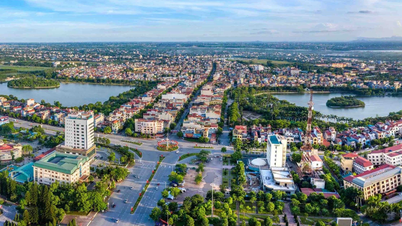
![[Photo] President Luong Cuong receives Prime Minister of the Kingdom of Thailand Paetongtarn Shinawatra](https://vphoto.vietnam.vn/thumb/1200x675/vietnam/resource/IMAGE/2025/5/16/52c73b27198a4e12bd6a903d1c218846)










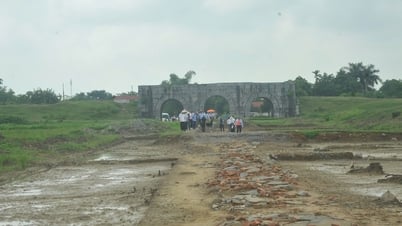












































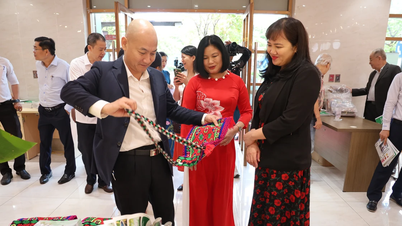



Comment (0)